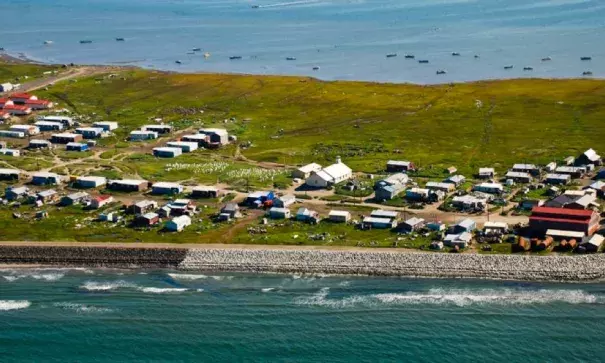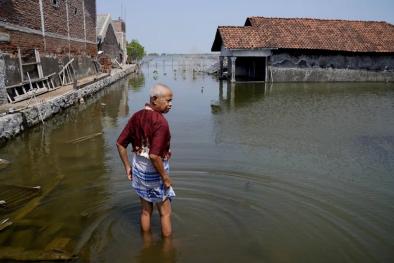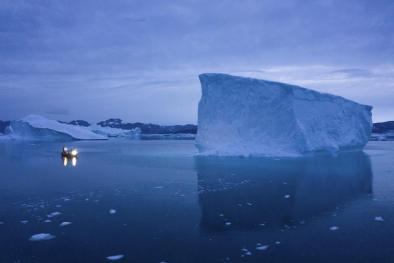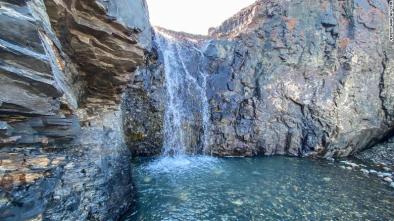Alaska Towns At Risk from Rising Seas Sound Alarm

According to the Army Corps of Engineers, 31 Alaskan communities face “imminent” existential threats from coastline erosion, flooding and other consequences of temperatures that are rising twice as quickly in the state as the global average. A handful — Kivalina, Newtok, Shishmaref and Shaktoolik — are considered in particularly perilous positions and will need to be moved.
...
Shishmaref, like Shaktoolik and Kivalina, is a town with several hundred inhabitants located on a barrier island. Last August, Shishmaref residents voted to relocate to the mainland but, in common with other Alaskan towns, there is no clear source of funding to do this. Meanwhile, Newtok, which sits on the banks of a river and is losing about 70 ft of land a year to erosion, appealed in January for disaster funding to relocate.
The coastal communities are threatened by a confluence of conditions that are making life difficult even for the flinty residents, who are used to dealing with an inhospitable, remote environment.
As the coastal buffer of sea ice retreats, towns are more vulnerable to storms and coastline erosion. Many key structures are built on permafrost, which is also melting, causing the buildings to subside or even crumple completely. And a succession of mild years — 2016 was nearly 6F warmer than the long-term average — is disrupting the patterns of wildlife in an environment where people rely upon the animals they catch for sustenance.
“People are coping with the loss of their history, places where they could reliably hunt and gather food, their burial sites,” said Mike Brubaker, of the Alaska Native Tribal Health Consortium. “It causes a lot of distress. Before you see the physical impacts of climate change, you see the mental impacts.”
Related Content






